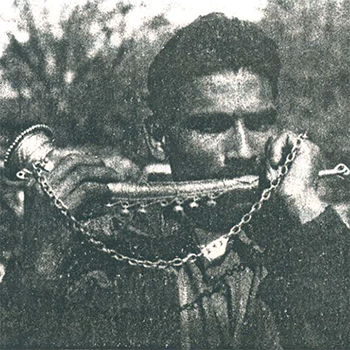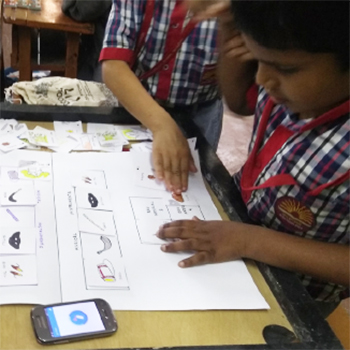"What is a musical instrument?" While one attempts to give an answer, however vague, to the question, the query implies others: "What is music?" and "What is the origin of music?" At first glance, the latter appears to be easier to answer.
The probings are important, because the concepts of musicology and organology are, in their present state, highly sophisticated. For, at the earliest stages of man, music, noise, speech, and dance are all an undivided condition of motor impulse. Is, for instance, a screech accompanying primitive or tribal "dance" music? Yet it has a "rhythmic" and "melodic" quality, or is more strictly an affective spell, different from speech. It therefore seems to me logical to take an undifferenciated sound material and use it in one of the communicative processes—both in humans and nonhumans—which later, in men, get bifurcated into speech and music, the former as a tool of conscious alphabets such as "notes," "chords," "ragas," and so on.
Starting at the other end of the spectrum, as it were, Hindu philosophy expresses the entirety of acoustic material, as well as non-acoustic material, in terms of the One Sound—the Premordial Vibration known and variously known as ivada Brahms, Omkara, and so on; thus, the metaphysical associations of the flute (with Krishna), veena (with Saraswathi), and damaru (with Siva).
The primaeval nebulous state of music is reflected in the early instruments, which do not produce any definite musical sounds of this type, such as scrapers, rasps, and seed rattles. The sound emitted by serapers is undeniably "noisy," and the instrument itself is found mostly with primitive tribes, such as the American Indian's antelope horn scraper and Mexico's Omichicahuaztli; in our own country, we have doddurajan of the Savaras and Kokkara of the Kanikars.The earliest instruments, again, are both musical and non musical in function. Musically, the association is inseparable from dance and hence also rhythm. Dried fruit rattles the Kaniyari dander of Oraons, or, more primitively, fruit shells tied to the waist, are such musical accompaniments of the early stages.Later on, we have fi sticks, slit drums, plates, bars, drums, veeras, and flutes. The functions of instruments were also a feature of early society. The coiicli was not only an announcer of battle but also a container of sacred water for ablution. The Nagcira and the Dliumia were also battle drums Membranophonics have been used as tools for signaling; the most famous ones are the Bengue. Riittray, for instance, has shown that "the difference in pitch between two skin drums used for transmitting news corresponds to the high and low pitches of ordinary speech." The Savaras of Orissa have a legend wherein one Kittung "invents" a drum and a brass gong to announce a funeral or a wedding.
What, then, is a musical instrument? Most broadly put, it is any material used for producing sound in music, but we have already noted its hazy origins. In this sense, the oldest instrument is the human body itself, particularly the voice. Indeed, it has been referred to as Gatra Veena, the body Veena, in our ancient musical texts. Clapping of hands, beating on things and buttocks, stamping on the ground—all such auditory bodily actions are the first instruments. It is interesting to note that the hand used as a counting adjunet to Vedic chanting—no sound is produced at all in this process—is called hasta.


